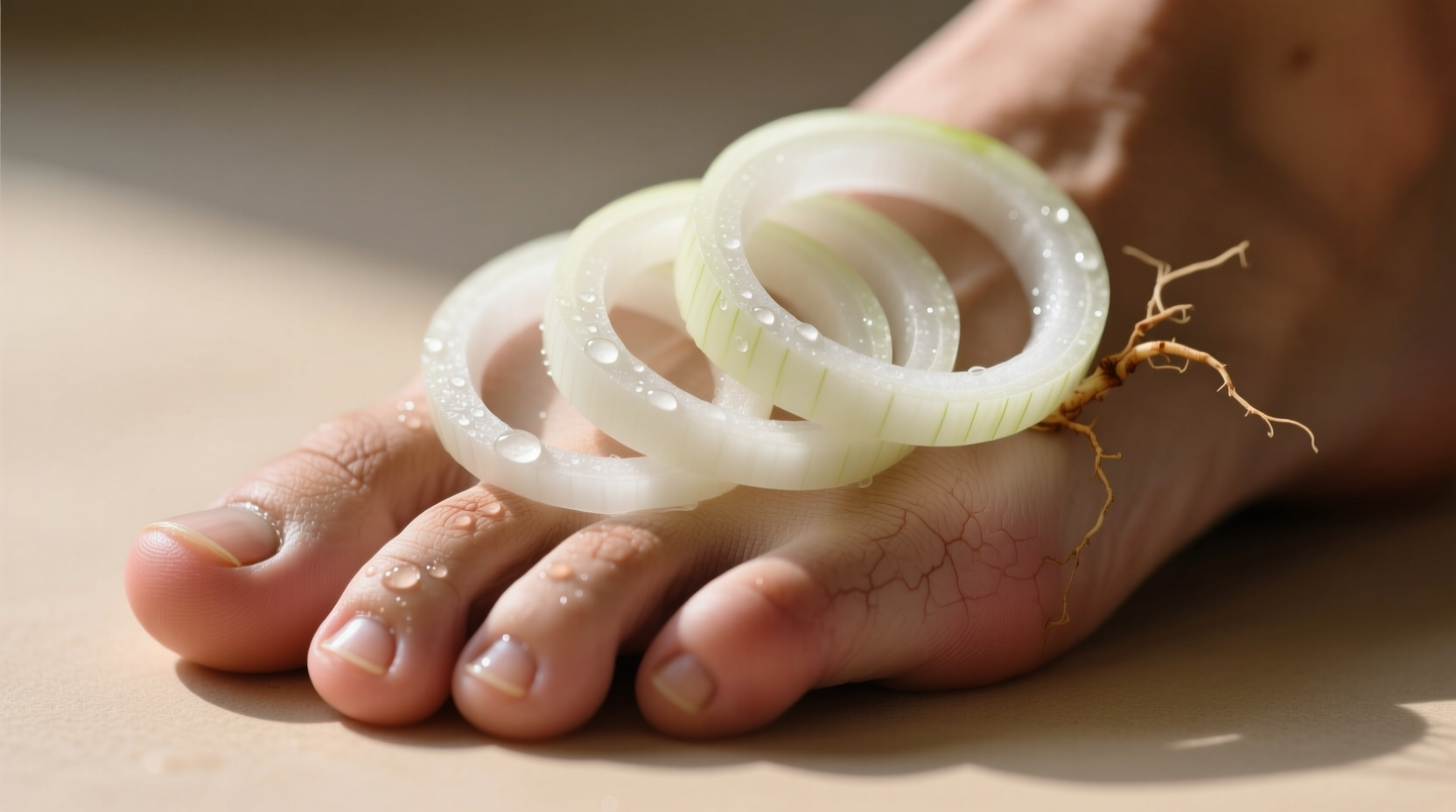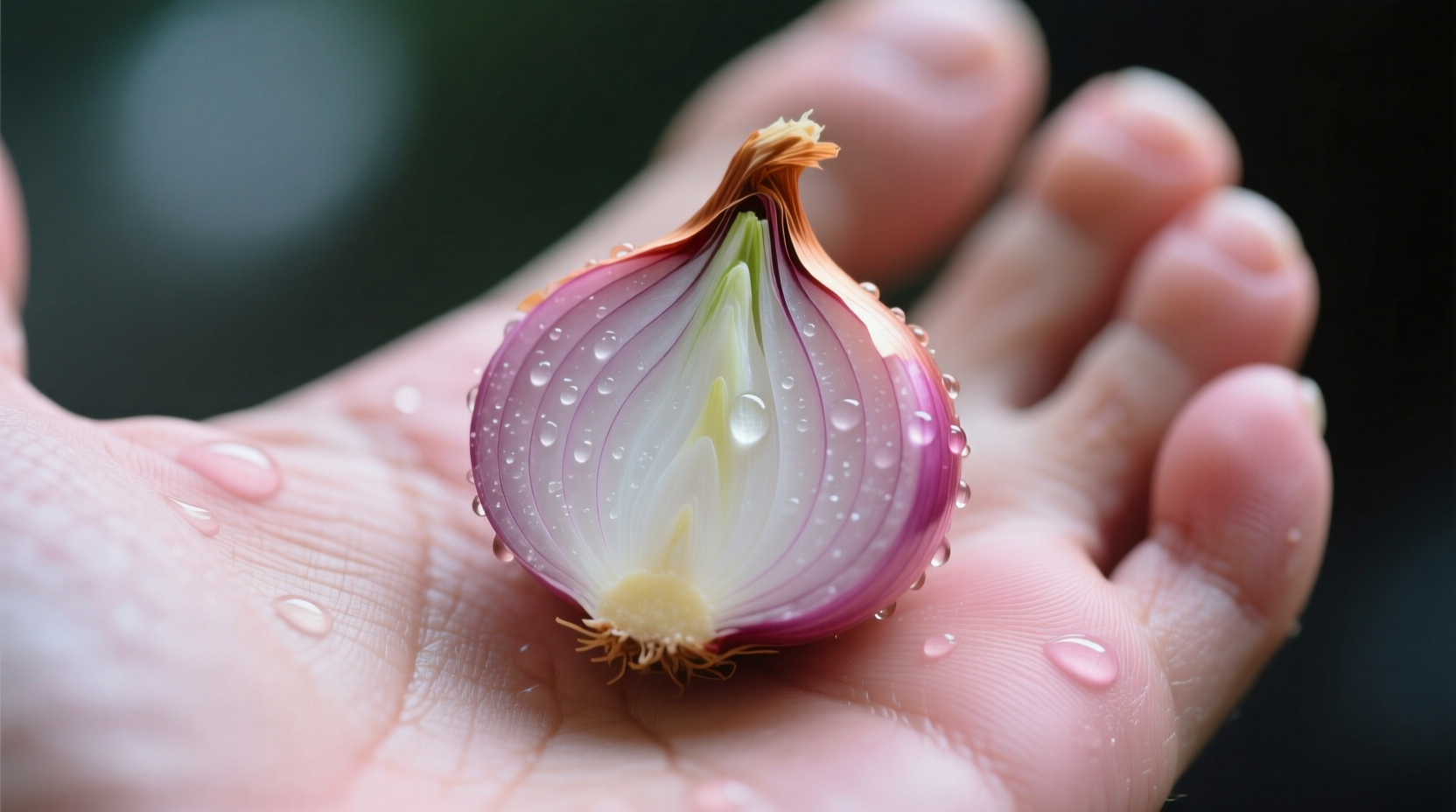Have you ever wondered why some people swear by placing raw onion slices on the soles of their feet? This centuries-old practice continues to circulate online, promising everything from cold relief to full-body detoxification. Let's separate fact from folklore with evidence-based insights you can trust.
The Origins of Foot Onion Therapy
This practice traces back to traditional medicine systems across multiple cultures. In Chinese medicine, foot reflexology points connect to various organs, while Ayurvedic traditions recognize the feet as absorption pathways. European folk medicine also documented similar applications, believing onions could 'draw out' illness through the skin.
| Common Claim | Scientific Reality | Evidence Level |
|---|---|---|
| Onions absorb toxins through feet | Skin doesn't absorb compounds this way; liver/kidneys handle detox | No scientific support |
| Cures colds and flu | No mechanism for treating respiratory infections | Contradicted by research |
| Reduces inflammation | Topical onion compounds show limited anti-inflammatory effects | Minimal topical evidence only |
How the Practice Actually Works (Spoiler: It Doesn't)
Proponents claim that placing raw onion on feet allows beneficial compounds to enter the bloodstream through reflexology points. However, the National Institute of Arthritis and Musculoskeletal and Skin Diseases explains that skin functions as a protective barrier, not an absorption pathway for systemic treatment.
When you place onion on your feet, the sulfur compounds may cause mild skin irritation that increases local blood flow—a temporary reaction easily mistaken for 'detoxification.' The Journal of Ethnopharmacology notes that while onions contain quercetin (a mild anti-inflammatory), the concentration needed for therapeutic effects can't be achieved through foot application.

When This Practice Might Be Harmless (and When It's Risky)
For most healthy adults, placing onion on feet poses minimal risk beyond potential skin irritation. However, certain situations require caution:
- Diabetics should avoid this practice due to reduced sensation and slower healing
- People with sensitive skin may experience chemical burns from onion's acidic compounds
- Those using medication shouldn't replace evidence-based treatments with unproven remedies
The American Academy of Dermatology warns that prolonged onion contact can cause irritant contact dermatitis, especially in children whose skin is more permeable.
Better Alternatives Backed by Science
Instead of relying on unproven foot treatments, consider these evidence-based approaches:
- For cold relief: Stay hydrated, rest, and use zinc lozenges within 24 hours of symptoms
- For detoxification: Support your liver with adequate water, cruciferous vegetables, and quality sleep
- For foot health: Practice proper hygiene, wear breathable footwear, and maintain good circulation
When seeking wellness solutions, always prioritize methods with clinical evidence. The Centers for Disease Control emphasizes that respiratory infections require appropriate medical care, not topical applications with no absorption pathway to affected areas.
Understanding the Appeal of This Folk Remedy
Why does this practice persist despite lacking scientific support? The National Center for Biotechnology Information identifies several factors:
- Placebo effect: Belief in treatment can trigger real physiological responses
- Anecdotal evidence: Coincidental recovery gets attributed to the remedy
- Cultural transmission: Traditional practices get passed down through generations
While these factors explain the persistence of the practice, they don't validate its effectiveness for treating medical conditions.











 浙公网安备
33010002000092号
浙公网安备
33010002000092号 浙B2-20120091-4
浙B2-20120091-4